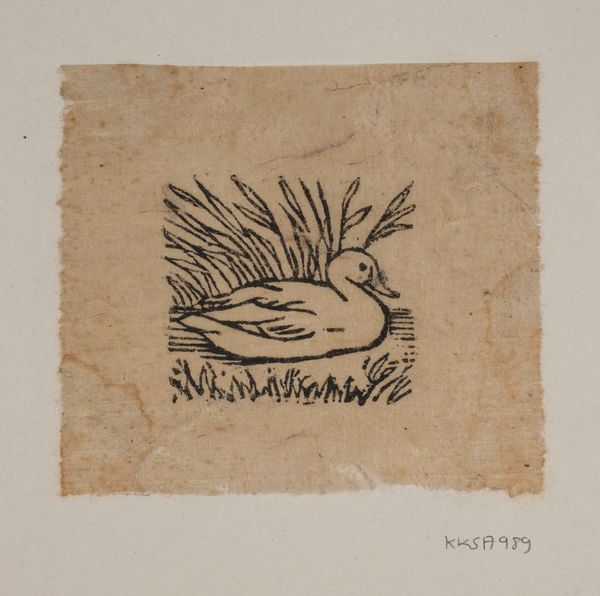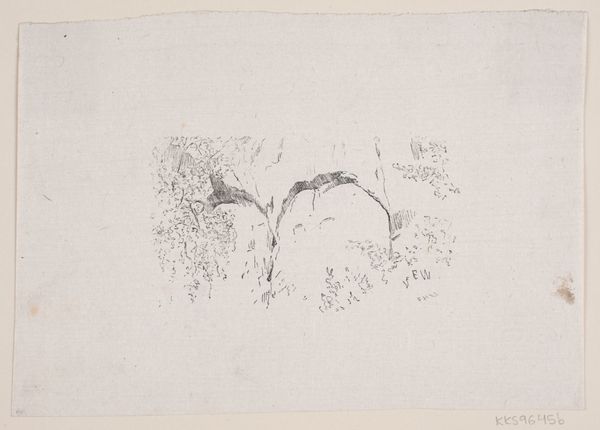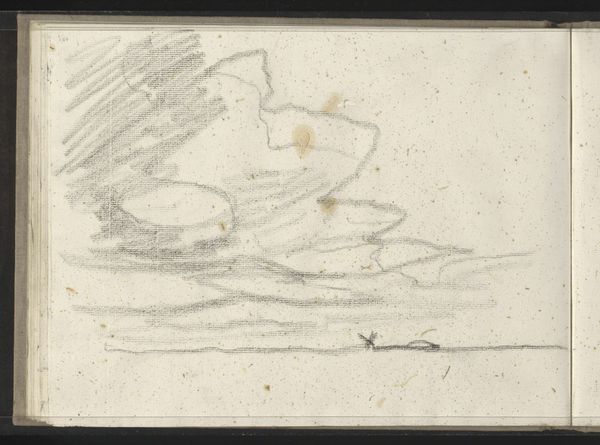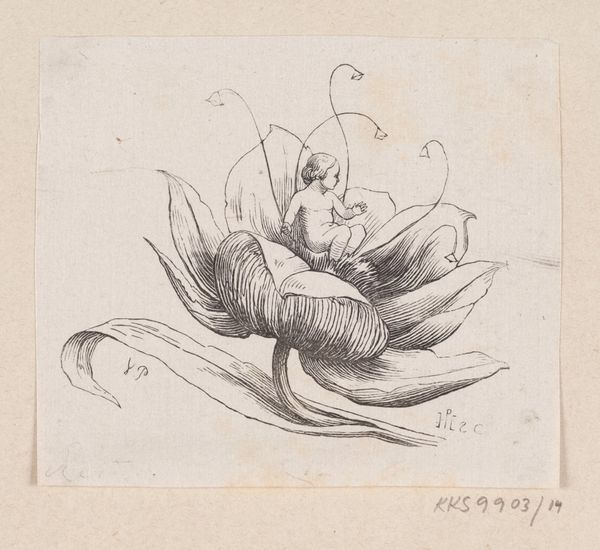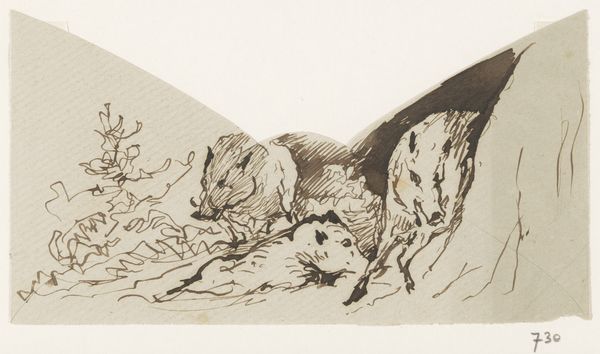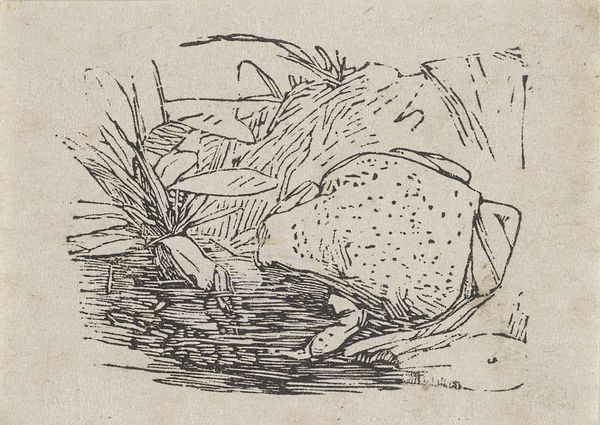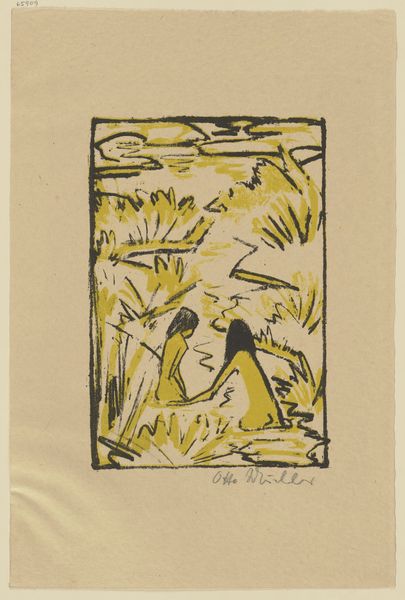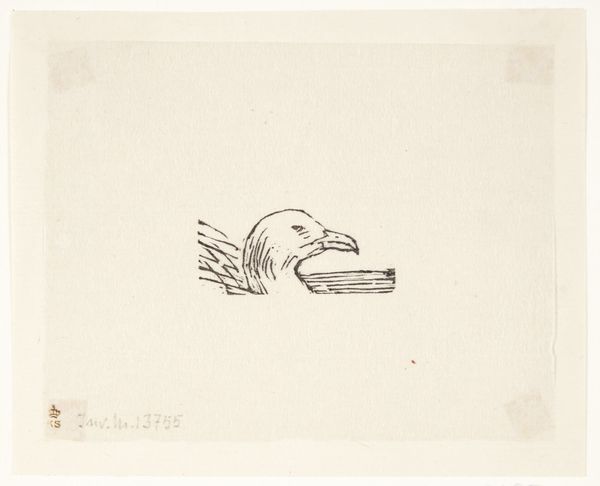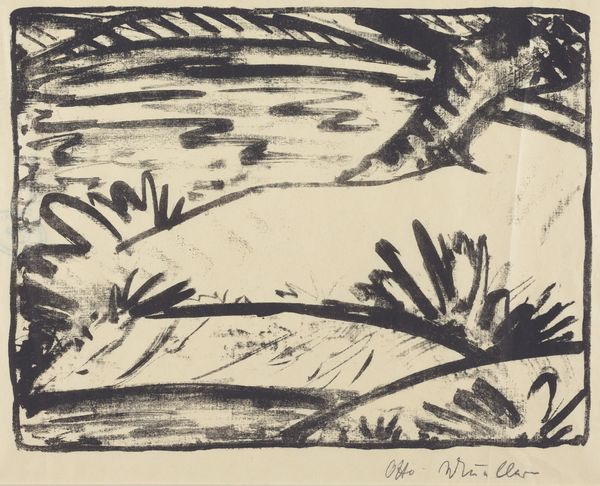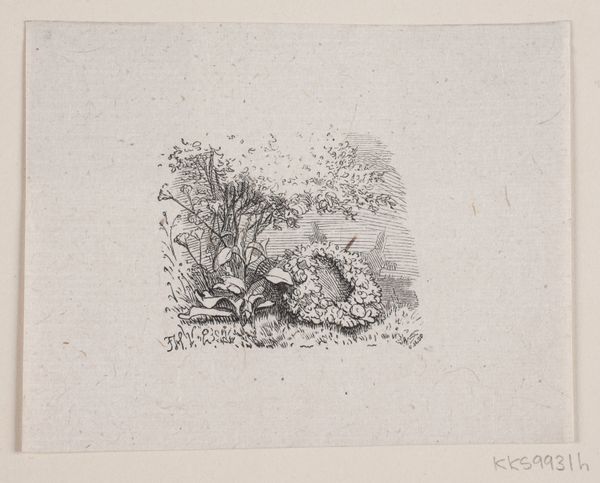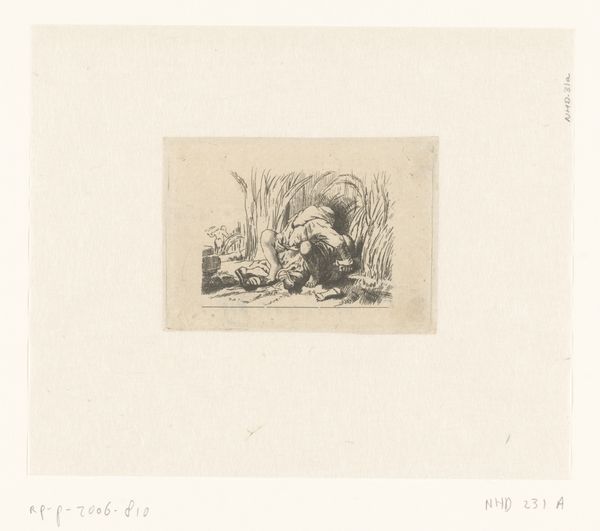
drawing, print, woodcut
#
drawing
# print
#
figuration
#
woodcut
#
line
Dimensions: 45 mm (height) x 50 mm (width) (billedmaal)
Curator: Welcome to Statens Museum for Kunst. We’re standing before “En and,” a woodcut drawing and print created by Joakim Skovgaard between 1865 and 1870. Editor: It's quite small, and its rough simplicity strikes me immediately. There's a duck nestled among the reeds, rendered with a heavy, dark line. It’s humble and endearing. Curator: Yes, Skovgaard's exploration of form is rooted in 19th-century Denmark’s search for a national art style, separate from European trends. This print exemplifies how artists used depictions of ordinary rural life, like a simple duck, to explore broader ideas of identity. What could be more Danish than the wildlife that inhabits it, using nature to mirror a nation’s soul? Editor: Right, and the process is critical to understand. The medium of woodcut – a relatively accessible printmaking technique – democratized the image, allowing for broader consumption. The materials themselves become important. We see how Skovgaard skillfully wielded a craft tradition to connect viewers to his rustic, pared-down imagery. There's a very immediate connection to the artist’s labor, the carving. Curator: It connects to broader cultural trends and the construction of nationhood through art. This piece shows the idealization of simple living that emerged during periods of national identity construction across Europe, including the Arts and Crafts movement later on, which we can see being inspired here. Editor: The limited tonal range in the print focuses our eye on the texture and form. Look at how the straight lines define the ground, while curved lines give shape to the duck, contrasting it to the unruliness of the reeds. It's very clever. Curator: Exactly, and it is by design, presenting a commentary on class and labor through a focus on landscape and humble subject matter, like the hard work of common folk and an emphasis on Danish roots through subject, style, and production. Editor: I think it really gives insight into the social context of its creation through its technique. The duck's calm form becomes a poignant comment when we see how simple the means of making are. Curator: It serves as a beautiful symbol for connecting identity, material, and technique. Editor: Agreed. I see now it encapsulates both artmaking, labor and nationhood. Thank you for illuminating those important contexts!
Comments
No comments
Be the first to comment and join the conversation on the ultimate creative platform.
